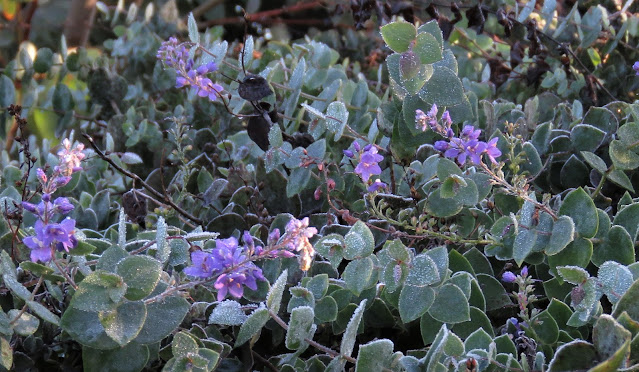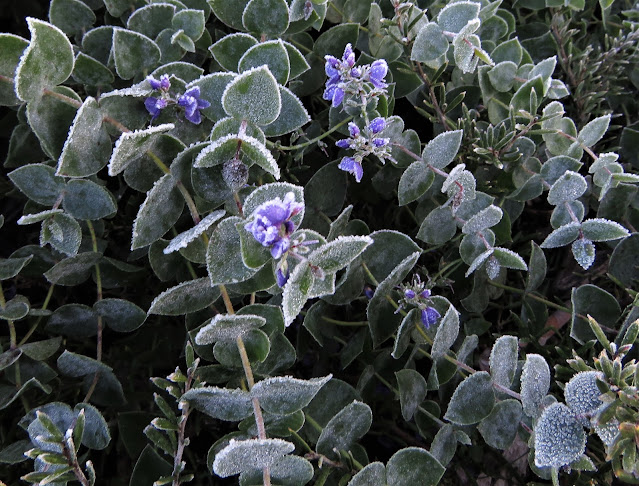Frosty pseudogum flowering out of season
Digger's Speedwell is what you might call a 'workhorse' plant in the Australian Garden at Royal Botanic Gardens Cranbourne. Or to use another cliché, it does plenty of 'heavy lifting'.
My photographs are from what we colloquially call the Snow Gum Walk, a side track off Eucalypt Walk on the west side of the Australian Garden. It's where Matt has planted I think all six of the Eucalyptus pauciflora subspecies.
Edging the path, covering ground and looking rather pretty most of the year, are dense clumps of Digger's Speedwell, Veronica perfoliata (although the plant labels still carry the older name, Derwentia perfoliata; for the back story of Veronica v. Derwentia, see my post from earlier this year).
The common name is intriguing. Speedwell - a name applied to many veronicas - is either a corruption of 'farewell' or 'Godspeed' in reference to the flower wilting soon after picking, or a nod to these plants being a 'lucky charm' for travelers, 'speeding them on their way'. Or perhaps it is just because they grow in slightly disturbed areas beside paths, lining the fastest route through the forest?
As for the Diggers part, my recently retired colleague (and continuing friend) Neville Walsh, suggests it could related to either their propensity for goldfield habitats or the shape of the leaves (like a shovel perhaps). We both the think the first alternative the most likely but feel free to correct Neville.
The species does vary in leaf form. We have the most commonly grown variant, with rounded leaves, and looks a lot like the ground-hugging forms of Eucalyptus pulverulenta, the Silver-leaved Mountain Gum. Not quite as silvery, but with those pairs of greyish leaves clasping the stem. Many do assume it's a young eucalypt with juvenile foliage.
The native habitat for this species is quite variable, from hillside forest and woodland through (at least in New South Wales) to alpine meadows. It extends from Ararat in western Victoria, eastward and northward to Rylestone in New South Wales.
I notice our plants are getting a little tatty in places and will need a hard prune pretty soon to look their best - they tolerate pruning back to their base. So, tough, frost tolerant, and...







Comments